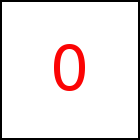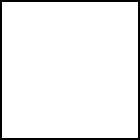Simple WebGL™ Html5 Popup Animations with no more than 4 Lines of javaScript
Pop-Ups are very common in today's HTML5/CSS web pages, as
explicit pop-up boxes, dialog or alert boxes, as pop-up menues and
much more.
The first very simple example shows a pop-up flying in from the
top left of the screen. WebGL™ would
not have been necessary for this first example, just to show the
basics. The example consists
of taccgl.actor("popup",null,"visible"), which selects
the HTML element with id=popup for animation and
specifies "visible" to make this element visible after
playing the animation. The from(0,-400,0) then defines
a transition that moves the pop-up into the page from
coordinates (0,-400) i.e. the top left of the screen.
from works in 3D and needs a third
coordinate z=0. The duration(2) defines
that the transition will run for 2 seconds. After being stated the animation
runs in parallel to further execution of javaScript.
taccgl.actor("popup",null,"visible"). from(0,-400,0) . duration(2) . start() | RUN |
For a detailed description of this javaScript code please refert to the
taccgl™ Tutorial.
The next simple example moves in a box.
It differs from the first example by using taccgl.dddBox as second parameter for actor
(Boxes).
Using depth(200) the depth of the box is specified. The rotateMiddle specifies an additional
rotation. Rotations will be discussed below. See Simple Rotation.
taccgl.actor("popup",taccgl.dddBox,"visible"). depth(200). from(-800,800,0). rotateMiddle(0.7,0.7,0). duration(2).start() | RUN |
All the examples on this page open and close a sample text box that is formatted using HTML and CSS as follows:
<style> .popup { visibility:hidden; position:absolute; min-width:450px; min-height:200px; padding:20px; border:1px solid black; background-color:#dddddd; font-size:19px; } #innertext {margin-left:auto; xmargin-right:auto; width:300px;} #torus {width:80px; border:1px solid black; position:absolute; left:0px; top:100px; padding:10px; background-color:white} </style> <div id="popup"> <div id="innertext"> <h2> Demo HTML/CSS Text </h2> <p><span style="color:red">You can add here the HTML text of your choice. </span> This is just dummy text to see how the pop-up looks like.</p> <img width="300px" src="/pic/PICT0516-900-243.jpg" border="0"> <p style="margin-top:10px">Click on the X above to see it close.</p> <img id="torus" src="/pic/torus.png" border="0"> </div> </div> | |
Continuation
The popup-animations in this article are intended to play
when an HTML element changes from visibility:hidden
to visibility:visible. During the animation the element is
still hidden and the animation is displayed with WebGL™; after the animation
WebGL™ becomes inactive and the element visible. So in the box example
above the top and right sides of the box vanish when the animation
is finished. The following example helps to further smooth this
transion. See .
Using cont multiple transitions can be concatinated.
The following example first moves in the box as in the example above and then flattens the box.
Using cont this second flattening step is defined.
depth(600,1) defines a transition gradually reducing the size of the box from 600 to 1.
See Continuations.
taccgl.actor("popup",taccgl.dddBox,"visible"). from(-800,800,0).depth(600). rotateMiddle(0,.7,.7).duration(2).start() .cont().depth(600,1).dur(2).start() | RUN |
Resizing and Flexibles
Let's first start with two examples using resize.
resize defines an animation that gradually grows or shrinks the animated element.
In the example below resize(1,a.h,a.w,a.h) starts with the element of width 1 and
its normal height (a.h) and grows it to its normal width (a.w) and height (a.h).
This example uses expressions as discussed in Expressions.
The second example in addition to the same resize operation moves the element from left to right,
so that the element seems opening in the middle.
(a=taccgl.actor("popup",null,"visible")) . resize(0.1,a.h,a.w,a.h) .duration(1).start() | RUN |
(a=taccgl.actor("popup",null,"visible")) . from (a.x+a.w/2,a.y,0). resize(1,a.h,a.w,a.h) .duration(1).start() | RUN |
The following examples, in addition to resize, change the shape of the element:
First flexiBorder is used to make the element flexible.
Then Wave is used to give the element a Wave form.
Finally Rect1 is used to gradually change the Wave form into the normal rectangular form.
(a=taccgl.actor("popup",taccgl.flexiBorder,"visible")) .resize(0.1,a.h,a.w,a.h) .Wave(40,40,-3.14159,3.14159) .Rect1() .duration(1) .start() | RUN |
(a=taccgl.actor("popup",taccgl.flexiBorder,"visible")) .from (a.x+a.w/2,a.y,0) .resize(1,a.h,a.w,a.h) .Wave(40,40,-3.14159,3.14159) .Rect1() .duration(1) .start() | RUN |
(a=taccgl.actor("popup",taccgl.flexiBorder,"visible")) .resize(0.1,a.h,a.w,a.h) .ZWave(0.2,0.2,-3.14159,3.14159) .Rect1() .duration(1) .start() | RUN |
(a=taccgl.actor("popup",taccgl.flexiBorder,"visible")) .from (a.x+a.w/2,a.y,0) .resize(1,a.h,a.w,a.h) .ZWave(0.2,0.2,-3.14159,3.14159) .Rect1() .blend(0,0,1,0) .duration(1) .start() | RUN |
The previous 2 examples in addition use ZWave to create a 3D-Wave form and blend
to fade in the element.
The next example works in two steps. First it gives the element a circle form
and grows it from one pixel size up to a full circle.
Then in a second step after the cont it gradually transforms the element
from circle shape into the usual rectangular shape. See Flexibles.
(a=taccgl.actor("popup",taccgl.flexiBorder,"visible")) . from (a.x+(a.w-a.h),a.y+a.h/2,0) .to (a.x+(a.w-a.h)/2,a.y,0) .resize(1,1,a.h,a.h) .Circle() .duration(1) .start() .cont() .Rect1() .flyHome().resize(a.h,a.h,a.w,a.h) .start() | RUN |
Acceleration
The following 3 examples use vEnd(0,0,0) to set the final velocity to 0,
which means the motion gradually slows down.
The second and third example show a motion from top and from left, by setting the
starting coordinates differently using the x and y coordinates of the HTML element
a.x and a.y. See Accelerated Motion.
taccgl.actor("popup",null,"visible").from(0,-400,0) .vEnd(0,0,0) .duration(2).start() | RUN |
(a=taccgl.actor("popup",null,"visible")) .from(a.x,-400,0) .vEnd(0,0,0) .duration(2).start() | RUN |
(a=taccgl.actor("popup",null,"visible")) .from(-400,a.y,0) .vBegin(1500,500,0) .duration(2).start() | RUN |
(a=taccgl.actor("popup",null,"visible")) .from(-400,a.y,2000) .vBegin(1500,500,0) .duration(2).start() | RUN |
(a=taccgl.actor("popup",null,"visible")) .from(-00,a.y,-2000). vEnd(0,0,0) .duration(2) .start() | RUN |
Rotation
The next two examples add some rotation using rotateMiddle.
The parameters specify an axis for the rotation. So rotateMiddle(0,1,0)
rotates around the y-axis and rotateMiddle(0,.7,.7) around the diagonal of the
y and z axis.
See Simple Rotation.
taccgl.actor("popup",null,"visible").from(0,1000,0).rotateMiddle(0,1,0) .vEnd(0,0,0) .duration(3) .start() | RUN |
(a=taccgl.actor("popup",null,"visible")) .from(-500,a.y,0) .rotateMiddle(0,.7,.7) .vEnd(0,0,0) .duration(3) .start() | RUN |
(a=taccgl.actor("popup",taccgl.dddBox,"visible")) .from(a.x,1200,0) .depth(250,250). rotateMiddle(1,0,0) .rotatePart(0,-Math.PI*2) .duration(2) .start(). cont() .depth(250,1) .start() | RUN |
(a=taccgl.actor("popup",taccgl.dddBox,"visible")) .from(-500,a.y-500,0) .depth(600) .rotateMiddle(0,.7,.7) .vEnd(0,0,0) .duration(3) .start() .cont() .depth(600,1) .start() | RUN |
Shadows
taccgl™ can automatically show shadows casted from animated
elements / objects on other animated elements / objects.
In above examples, there are no shadows, because there is just one
animated element, while the main body of the page is just HTML and not
an element animated with taccgl™. In the example below this is changed
using taccgl.a(document.body), which makes the complete
document body an animated element. color("black") makes it
completely opaque and shadowOnly makes sure that only shadows
appearing on the body are drawn with taccgl™, not the content of the body itself.
The next thing needed is posZ, e.g. posZ(-400).
This places the pop-up box 400 pixels in front of the document body.
With the default z coordinate of z=0, the pop-up box would be immediately
on top of the body and consequently case no shadow on it.
Now you will notice on the first example below, that the pop-up
shown is enlarged. This is, because it is 400px nearer to the camera
and so appears larger. This perspective effect can be undone
by resizing the element using resizeZ (see second example).
taccgl.a(document.body).color("black") .shadowOnly() .dur(6) .start(); taccgl.actor("popup",null,"visible").posZ(400) .from(0,2000,400) .rotateMiddle(0,1,0). vEnd(0,0,0).dur(4) .showAfter() .start() | RUN |
taccgl.a(document.body) .color("black") .shadowOnly() .dur(6) .start(); taccgl.actor("popup",null,"visible").posZ(400) .resizeZ() .from(0,2000,400) .rotateMiddle(0,1,0) .vEnd(0,0,0) .dur(4) .showAfter() .start() | RUN |
Finally you will notice that the shadow eventually disappears. This
is the case because then the taccgl™ animation terminates and the pop-up
box is displayed using HTML.
Page Flip Animation
Another nice effect made with HMTL5/WebGL™ is a page flip lke animation which displays a curved surface.
taccgl.a(document.body).color("black").shadowOnly().start(); taccgl.actor("popup",taccgl.flexiBorder,"visible") .flyIn(-600,4000,0). Flip(0,0). Rect1(). vEnd(0,0,0) . start() | RUN |
The next version adds a shadow.
taccgl.a(document.body).color("black").shadowOnly().dur(3).start(); taccgl.actor("popup",taccgl.flexiBorder,"visible") .flyIn(-600,1000,-3000). Flip(0,0). Rect1(). vEnd(0,0,0) . dur(3). start() | RUN |
Multi Animations
Using sliceV an element can be cut into vertical slices.
All methods called afterwards act separately on each of the slices in parallel.
sliceH cuts the element into horizontal slices and
By using both sliceV and sliceH the element
is cut into rectangular pieces.
sequence is used to perform all the transitions in a
sequence.
taccgl.a(document.body).color("black") .shadowOnly() .dur(6) .start(); taccgl.ma("popup").paint() .posZ(400) .resizeZ() .visFinal('visible') .sliceV(10) .from(0,2000,400) .rotateMiddle(0,1,0) .vEnd(0,0,0) .dur(4) .showAfter().start() | RUN |
taccgl.a(document.body).color("black").shadowOnly().dur(12).start(); taccgl.ma("popup").paint() .posZ(400) .resizeZ() .visFinal('visible') .sliceV(40) .sliceH(20) .sequence(10,-0.5).from(0,2000,400) .rotateMiddle(0,1,0) .vEnd(0,0,0) .showAfter() .start() | RUN |
Finally two more advanced examples. They use the mp method to set different
parameters for each of the animated rectangles.
mp get a function as parameter. This function is called once for each
animated rectangle and it is passed the corresponding transition as parameter a.
In the examples for each rectangle a different starting time is selected using
the javaScript random function.
taccgl.a(document.body) .color("black") .shadowOnly() .dur(6) .start(); taccgl.ma("popup").paint().posZ(400) .resizeZ() .visFinal('visible') .sliceV(40) .sliceH(20) .mp( function(a,i){ a.startTime(Math.random()*4) .dur(3) }) .from(0,2000,400) .rotateMiddle(0,1,0) .vEnd(0,0,0) .showAfter() .start() | RUN |
taccgl.a(document.body) .color("black") .shadowOnly() .dur(4) .start(); taccgl.ma("popup").paint().posZ(400) .resizeZ() .visFinal('visible') .sliceV(40) .sliceH(20) .mp( function(a,i){ a.startTime(Math.random()) .dur(0.5) .from(0,a.y,400) }) .rotateMiddle(0,1,0) .vEnd(0,0,0) .showAfter() .start() | RUN |
Conclusion
This article showed some very small example animations made
with taccgl™ and html5-WebGL™. We restricted ourselves on examples
that are no longer than 4 lines of javaScript code. To see some
more elaborate examples we refer to
our Home Page.
In order to get a complete understanding of the examples shown
in here we refer to the taccgl™ Tutorial
and then the taccgl™ Manual.
WebGL™ is a trademark of the Khronos Group Inc.
|





